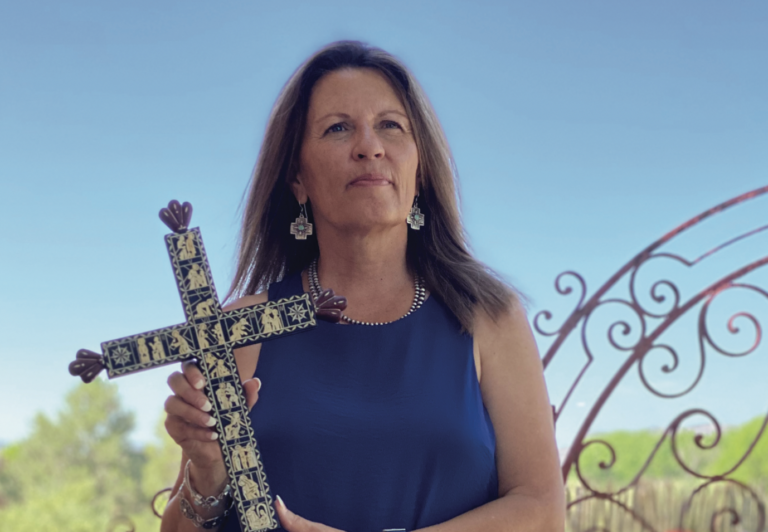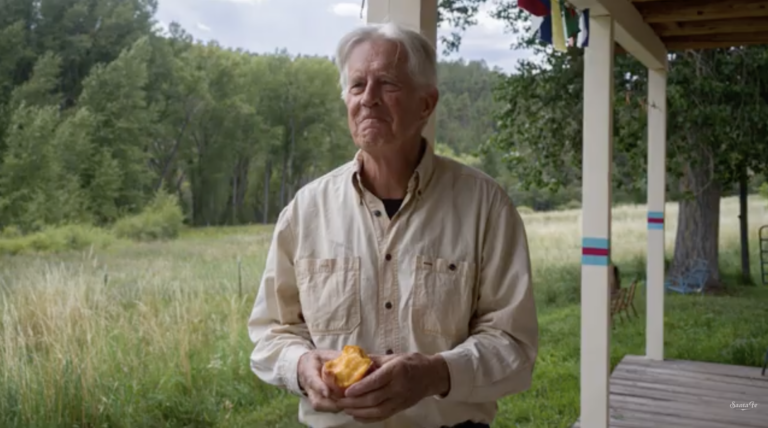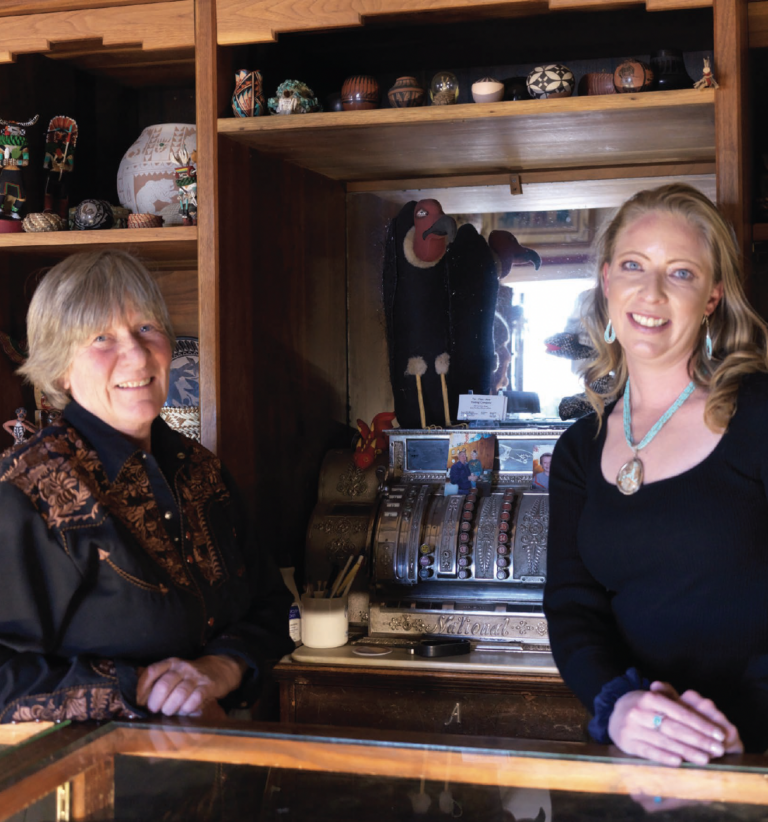AS OUR DROUGHT WORSENS, a trio of exceptional conservationists have gathered at Steve Blamer’s Blame Her Ranch in Ribera to build a model of what water management could – and should – look like.
The team is comprised of Sam Knowlton from San Isidro Permaculture, a local ecological design and restoration landscaping company; Ean Garvin, a PhD in biogeosciences and a consultant specializing in reconstruction of wetlands; and Mark Peaden, a professor of desert ecology and applied conservation.
Over breakfast at the Anasazi, we learned what this model looks like.
Tell us about the ranch project.
Sam: Our focus is on water harvesting, erosion mitigation, and revegetation. We assessed erosion patterns, runoff volumes, and vegetation in the area to determine how to capture the maximum amount of rain water.
Our solution includes two ponds: one permanent – sealed with natural clay for wildlife and vegetation – and a second overflow pond to slowly infiltrate excess water back into the water table. These ponds can hold over 300,000 gallons from a single event.
The design also included erosion control structures, where we used rock from on site to slow and spread water out, creating a microclimate for the vegetation to establish.
In addition, we planted over 200 native trees and shrubs to stabilize the soil and attract wildlife. And we hydro-seeded three acres around the ponds with dozens of different species of native wildflowers and grass. The grasses and
wildflowers have spread pretty dramatically. We’ve basically transformed an overgrazed land so that now, when it rains, the infrastructure is set up so that any water is captured and nothing is wasted.
Has wildlife increased?
Mark: As we bring in this water, we’re documenting the wildlife that is there and planning how we’re going to increase those species.
There’s a technique called wildlife guzzlers, a system that catches the water and sits it in small basins so wildlife can come drink from them. They’re great because you just set them in the ground and they do the work for you. We’ve placed online game cameras on the guzzlers, so we’re able to quantify what species are there and in what numbers. We’ve also added acoustic monitors that monitor birds and frogs.
We’re seeing great bird diversity. The birds are called neotropical migrants – warblers, tanagers, etc. They spend most of the winter in Columbia, Mexico, and South America and migrate through New Mexico up toward Canada and Montana. They really count on this migratory pathway.
We monitor bats as well. Bats provide essential ecosystem services; they eat 500–1,000 mosquitoes per night. Free pest control.
In terms of frogs, we’re seeing interesting diversity there as well. New Mexico has some pretty elusive frogs since there’s obviously not a lot of water here. In fact, we’re talking about reintroducing native bullfrog species.
We have some species of toads in this area that spend 97% of their lives underground. The only time they come up is for reproduction, and that’s when you hear them. That’s called explosive breeding. Seriously.
So we’re closely monitoring the effect of these new conservation practices on all of the wildlife. You catch the water, and the species will come.
Ean: Another really cool project we’re working on is installing the Motus Wildlife Tracking System. These are towers that exude a frequency, similar to FM in your car, that allows for tagging and tracking species. It identifies all of the migratory species coming through an area, emitting a beacon that lets you know when the wildlife is passing through. So now you know, This bird arrived this day and left this day.
Mark: We’re seeing an issue with rain events where it’s not just lack of water, it’s also determining when the rain happens. If it comes 10 days early, some birds might not be here yet, and if it comes 30 days late, those birds are likely gone. So it’s not just the amount of rainfall we’re concerned with, it’s also the timing.
WANT TO READ MORE? SUBSCRIBE TO SANTA FE MAGAZINE HERE!
Photo SFM








